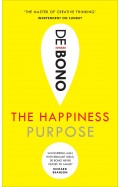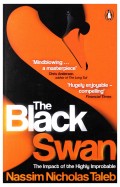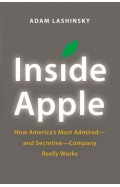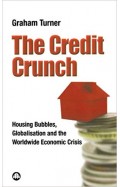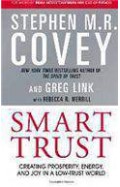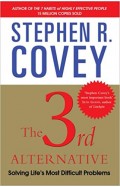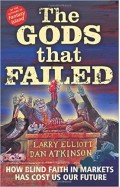- Home
- Sale
- 11.11 Sale UPTO 90% OFF
- 45% OFF
- Calculating Success: How the New Workplace Analytics Will Revitalise Your Organization
Calculating Success: How the New Workplace Analytics Will Revitalise Your Organization
By: Carl Hoffmann
-
Rs 3,737.25
- Rs 6,795.00
- 45%
You save Rs 3,057.75.
Due to constant currency fluctuation, prices are subject to change with or without notice.
This title helps us in using analytics to make more effective talent management decisions. Most managers understand that employees can make or break a company's strategy. You can have the best ideas and the most promising plan, but if you don't have the right people to carry it out, that plan will fail. Still, despite having this critical knowledge, most companies don't have a data-driven approach to the decisions they make about talent. In fact, a recent IBM study that interviewed over 400 senior HR executives showed that only 6 per cent of companies believe they can effectively use human capital data to make strategic workforce decisions. Enter "Calculating Success", the forthcoming book by human capital experts Carl Hoffmann, Eric Lesser, and Tim Ringo. Based on decades of experience creating human capital systems at IBM, the authors show how using analytics can dramatically improve a company's ability to make better and faster talent decisions. By organizing the book around four crucial questions managers must ask, the book provides a framework to help executives rethink how they use information on talent. The result? A path to using analytics to make more effective talent management decisions. In addition, the authors' ideas help to link HR with all levels of the organization in a strategic way, by showing readers how to connect their version of analytics to the strategic mission of the larger organization, so that the analytics flows throughout the enterprise. With detailed examples and studies from IBM's Institute for Business Value and Human Capital Management practice, this book will make you rethink the relationship of talent to business success. The results allow for a more stable and cost-effective workforce, an improved ability to motivate employees, and a more systematic approach to developing critical talent.
| Book | |
| What's in the Box? | 1 x Calculating Success: How the New Workplace Analytics Will Revitalise Your Organization |
This title helps us in using analytics to make more effective talent management decisions. Most managers understand that employees can make or break a company's strategy. You can have the best ideas and the most promising plan, but if you don't have the right people to carry it out, that plan will fail. Still, despite having this critical knowledge, most companies don't have a data-driven approach to the decisions they make about talent. In fact, a recent IBM study that interviewed over 400 senior HR executives showed that only 6 per cent of companies believe they can effectively use human capital data to make strategic workforce decisions. Enter "Calculating Success", the forthcoming book by human capital experts Carl Hoffmann, Eric Lesser, and Tim Ringo. Based on decades of experience creating human capital systems at IBM, the authors show how using analytics can dramatically improve a company's ability to make better and faster talent decisions. By organizing the book around four crucial questions managers must ask, the book provides a framework to help executives rethink how they use information on talent. The result? A path to using analytics to make more effective talent management decisions. In addition, the authors' ideas help to link HR with all levels of the organization in a strategic way, by showing readers how to connect their version of analytics to the strategic mission of the larger organization, so that the analytics flows throughout the enterprise. With detailed examples and studies from IBM's Institute for Business Value and Human Capital Management practice, this book will make you rethink the relationship of talent to business success. The results allow for a more stable and cost-effective workforce, an improved ability to motivate employees, and a more systematic approach to developing critical talent.
Savage Harvest: A Tale of Cannibals, Colonialism, and Michael Rockefeller's Tragic Quest for Primitive Art
By: Carl Hoffmann
Rs 632.50 Rs 1,150.00 Ex Tax :Rs 632.50
Calculating Success: How the New Workplace Analytics Will Revitalise Your Organization
By: Carl Hoffmann
Rs 3,737.25 Rs 6,795.00 Ex Tax :Rs 3,737.25
Zubin Mehta: A Musical Journey (An Authorized Biography)
By: VOID - Bakhtiar K. Dadabhoy
Rs 472.50 Rs 1,050.00 Ex Tax :Rs 472.50
The Little Bullet Book: Be Gorgeously Organized
By: David Sinden
Rs 1,556.75 Rs 2,395.00 Ex Tax :Rs 1,556.75
Joy at Work : Organizing Your Professional Life - Hardcover
By: Marie Kondo
Rs 2,362.25 Rs 4,295.00 Ex Tax :Rs 2,362.25
Organize & Create Discipline: An A-to-Z Guide to an Organized Existence - Paperback
By: Justin Klosky
Rs 1,097.25 Rs 1,995.00 Ex Tax :Rs 1,097.25
The Black Swan The Impact Of The Highly Improbable
By: Nassim Nicholas Taleb
Rs 2,965.50 Rs 3,295.00 Ex Tax :Rs 2,965.50
Inside Apple How Americas Mo Admired And Secretive Company Really Works
By: Adam Lashinsky
Rs 1,012.50 Rs 1,350.00 Ex Tax :Rs 1,012.50
Buyology How Everything We Believe About Why We Buy Is Wrong
By: Martin Lindstrom
Rs 2,515.50 Rs 2,795.00 Ex Tax :Rs 2,515.50
The 3rd Alternative Solving Life s Most Difficult Problems
By: Stephen Covey
Rs 516.75 Rs 795.00 Ex Tax :Rs 516.75
The Little Bullet Book: Be Gorgeously Organized
By: David Sinden
Rs 1,556.75 Rs 2,395.00 Ex Tax :Rs 1,556.75
Joy at Work : Organizing Your Professional Life - Hardcover
By: Marie Kondo
Rs 2,362.25 Rs 4,295.00 Ex Tax :Rs 2,362.25
Organize & Create Discipline: An A-to-Z Guide to an Organized Existence - Paperback
By: Justin Klosky
Rs 1,097.25 Rs 1,995.00 Ex Tax :Rs 1,097.25
No recently viewed books available at the moment.
Zubin Mehta: A Musical Journey (An Authorized Biography)
By: VOID - Bakhtiar K. Dadabhoy
Rs 472.50 Rs 1,050.00 Ex Tax :Rs 472.50
Savage Harvest: A Tale of Cannibals, Colonialism, and Michael Rockefeller's Tragic Quest for Primitive Art
By: Carl Hoffmann
Rs 632.50 Rs 1,150.00 Ex Tax :Rs 632.50
Calculating Success: How the New Workplace Analytics Will Revitalise Your Organization
By: Carl Hoffmann
Rs 3,737.25 Rs 6,795.00 Ex Tax :Rs 3,737.25
The Little Bullet Book: Be Gorgeously Organized
By: David Sinden
Rs 1,556.75 Rs 2,395.00 Ex Tax :Rs 1,556.75
Joy at Work : Organizing Your Professional Life - Hardcover
By: Marie Kondo
Rs 2,362.25 Rs 4,295.00 Ex Tax :Rs 2,362.25
Organize & Create Discipline: An A-to-Z Guide to an Organized Existence - Paperback
By: Justin Klosky
Rs 1,097.25 Rs 1,995.00 Ex Tax :Rs 1,097.25












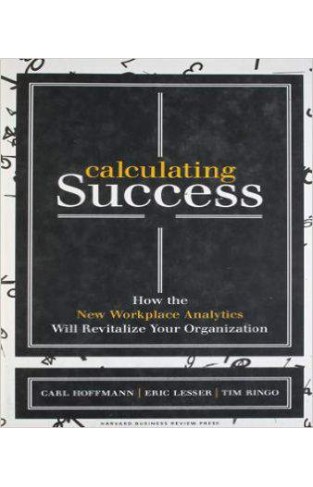


-120x187.jpg?q6)







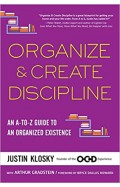
-120x187.jpg?q6)
-120x187.jpg?q6)
